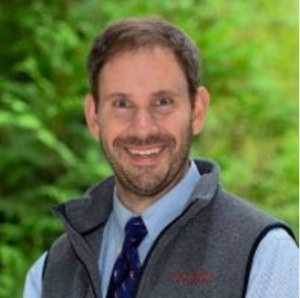3D Printing Face Protection from Home: Mr. Mitchell Prints Face Shield Headbands to Donate to Essential Workers
The COVID-19 pandemic has caused mass shortages of masks and face shields across the country, but many makers are offering to help essential workers stay safe and protected. DesignLab Director Michael Mitchell is one of them.
May 2, 2020
The COVID-19 pandemic has caused mass shortages of masks and face shields across the country, but many makers are offering to help essential workers stay safe and protected. DesignLab Director Michael Mitchell is one of them.
During March break, Mr. Mitchell brought the St. Luke’s DesignLab 3D printers to his garage to construct and donate headbands utilized in face shield assembly. Over the past two months, Mitchell has personally donated over 250 headbands to companies such as TECLens, an optical startup company in Stamford.

Mitchell recounts the moment he realized the benefit that could be brought from utilizing the 3D printers for face shield production.
“One of the first things I thought of was, ‘Wait, we’ve got all these 3D printers; why not put them to good use?’ I think that’s reflective of our community and the things that we stand for. I’m grateful that it was second-nature to me to get up and do that.”
In his garage, Mitchell creates the headbands using PLA (Polylactic Acid) plastic, a safe and easy-to-use material. St. Luke’s had a supply of their own PLA plastic that he was able to print with, and he has personally bought several extra spools to continue printing the parts. Once printed, Mitchell sanitizes the headbands with 90% Isopropyl Alcohol and drives them to a front door drop-off at TECLens. The company then assembles the face shields and forwards them to the Montefiore Health System in New York, where they are used by essential workers to keep themselves and others safe while on duty.
Mr. Mitchell would like to specifically thank Mrs. Gabriele and Mr. Maier, who helped orchestrate his 3D printer pickup, and Ms. Parker-Burgard, who has been hand-sewing masks at home for local community members. He would also like to thank essential workers who are courageously fighting the Coronavirus pandemic from the front lines.
Mitchell also mentioned that he is grateful for the St. Luke’s community and the dedication we have to service.
“I certainly think it’s worth thanking the entire community,” Mitchell shared. “I very much consider the time that I spend during the day setting up the printers, fixing the printers, and doing this production as part of my job and responsibility because of the emphasis that [St. Luke’s has] on service and doing good for others: this greater connection to public purpose.”
For those who don’t have access to 3D printers but still want to help, Mr. Mitchell suggests that they can sew cloth-based masks and face shields or volunteer to assemble them. Mitchell also emphasizes the importance of community involvement, mentioning that “reaching out to a neighbor, family member, or relative in need” and “connecting them with people who can provide [what they need]” can do worlds of good for the welfare of the local community.
Though quarantine can be trying for us all, Mitchell encourages everyone to reach out and find ways to make a difference.
“In a time when we are all sitting in the same spot staring at a computer for the majority of the day, this certainly can be a time to look for connections that may not seem obvious,” Mitchell reflected. “[You can] reach out [to a neighbor or friend] to say hello, or send a thank-you card to a first responder. If somebody’s thinking to themselves, ‘I’ve never sewn before; how could I actually sew these face masks?’, this could be the time to say, ‘It might be fun to learn how to sew!’”
By “go[ing] forth to serve”, an excerpt from our school motto, Mitchell believes that we all can generate positive change for our communities; whether by hand-sewing masks, reaching out to those who need help, or in his case, 3D printing face shield components.




